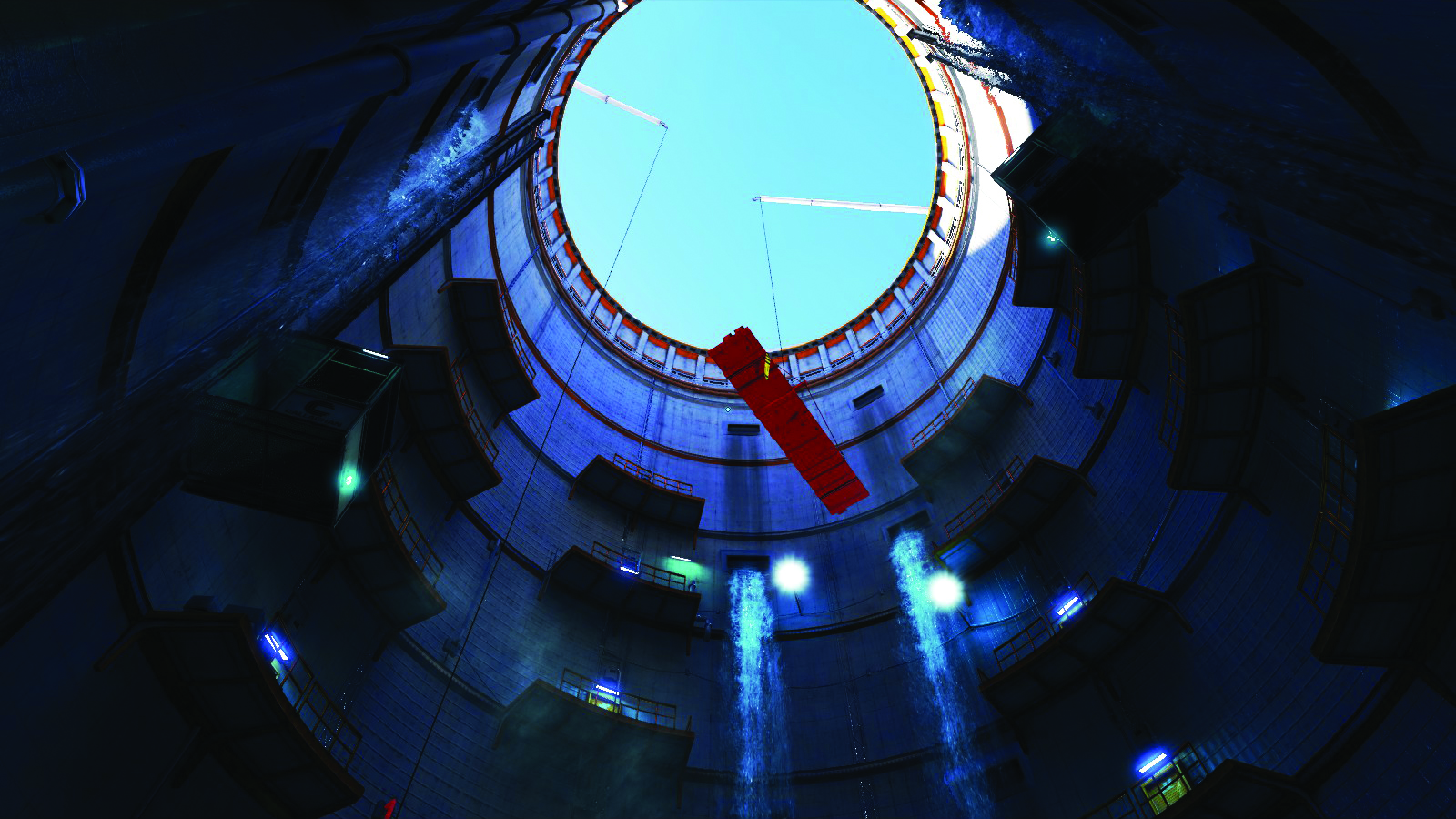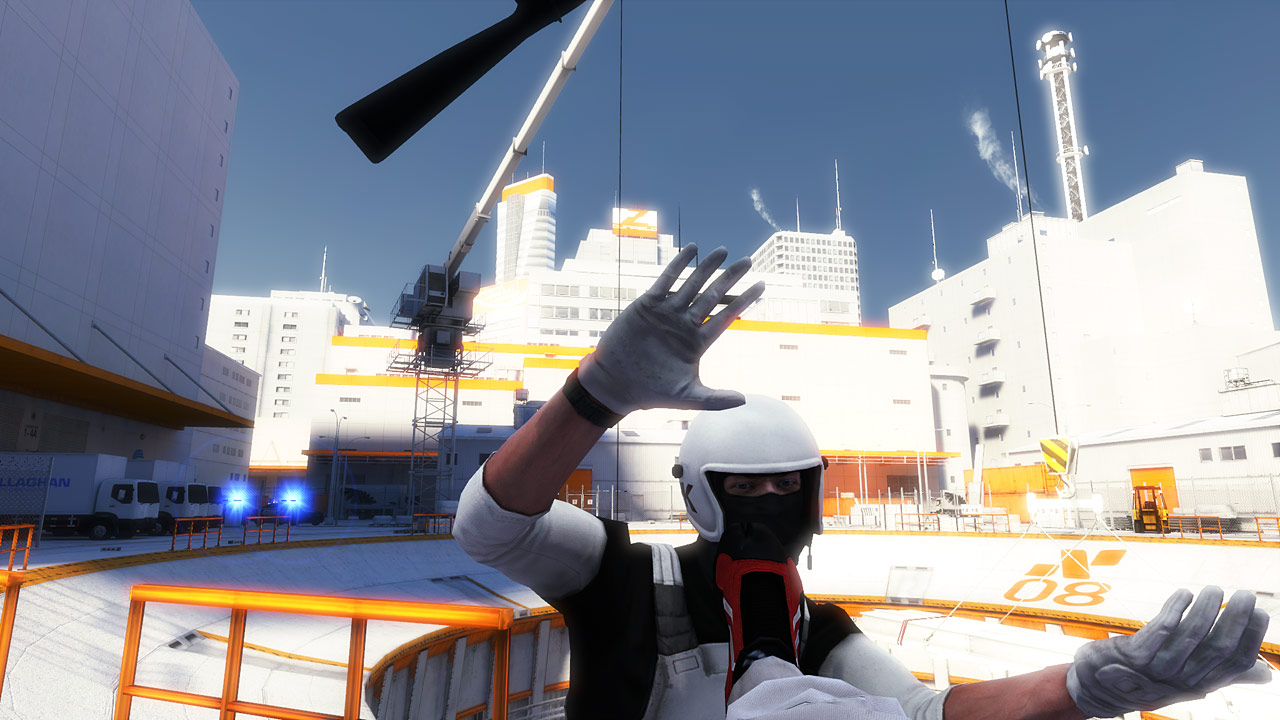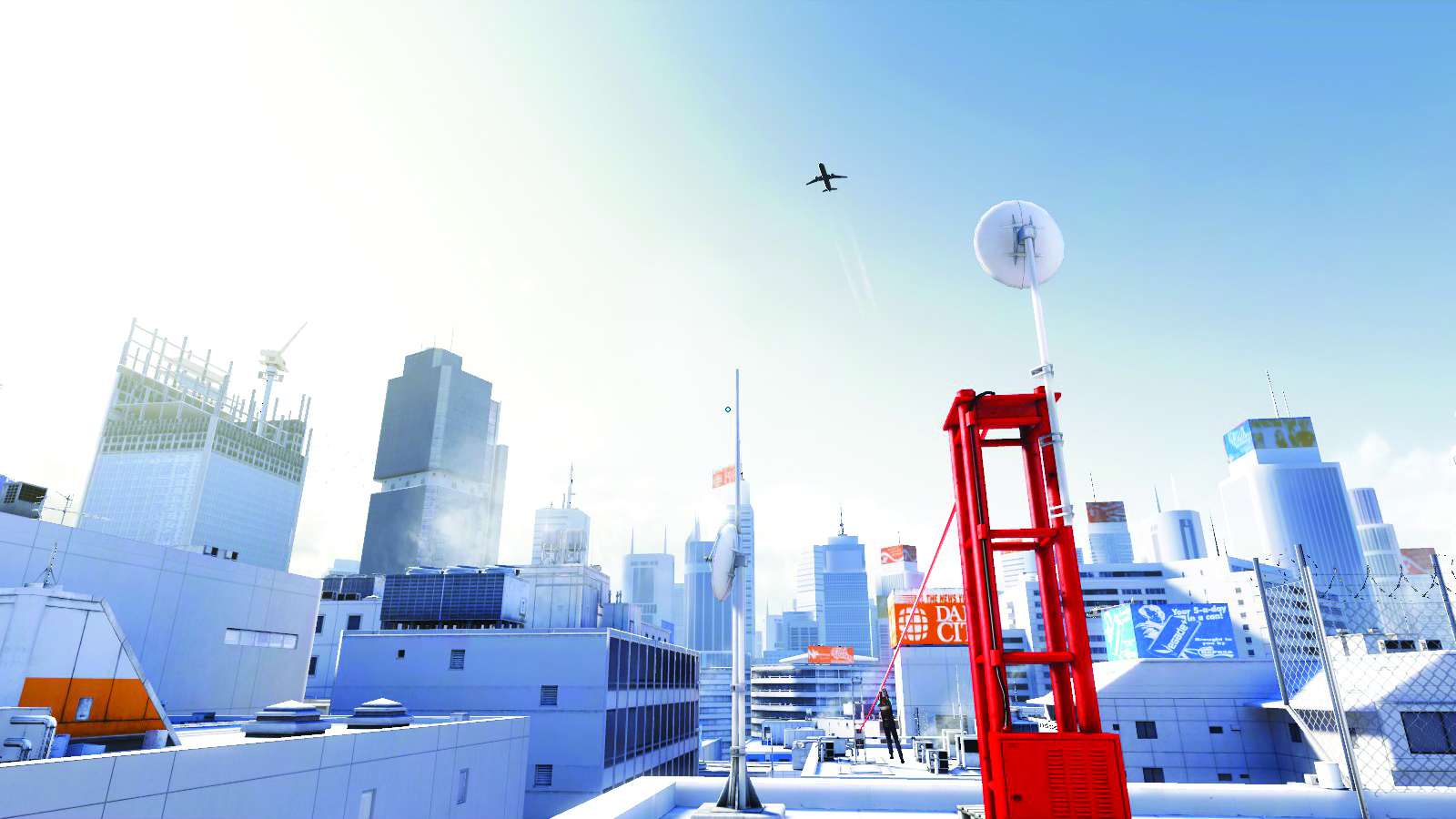Time Extend: Mirror's Edge
The anti-authoritarian adventure that opened a window to a new world of first-person play.

This article was originally published in issue 288 of Edge in December 2015. That means below you'll find some forward-looking references to Mirror's Edge Catalyst, which we've kept here for context. You can subscribe here for more great features like this.
Mirror’s Edge arrived in 2008 as a searing white riposte to a just-ended generation of over-brown WWII shooters and firstperson trudging. It was different, and new—different partially because it was new, forming a partnership of opposites with fellow EA newcomer Dead Space. Both were fresh IP, released a month apart in a publisher’s schedule otherwise dominated by licences and sequels, and both were built upon contrasting foundations of meaningful design.
Dead Space, made in California by Visceral Games, encapsulated a grounded American industrialism, a practical celebration of blue-collar capability that informed everything from its violence to its visuals. And Mirror’s Edge, built in Stockholm by DICE, was almost comically Scandinavian, a bright, minimalist vision of sleek architecture and graceful action—part parkour playground, part Ikea dystopia.

Mirror’s Edge is a game about movement. Its heroes are ‘runners’, athletic outlaws who carry off-grid information in a spotless future of oppressive surveillance and security. This is movement as morality; in a society built on passive obedience, speed is rebellion and flawless agility is freedom. It’s a game about energy and creativity, and how these are expressed from the confinements of a perspective and a genre more normally given over to destruction, a window for lining up targets and admiring their ends.
If the game’s setting—known simply as The City—has aged well, it’s because it was always designed for beauty rather than realism. It’s not an as-best-we-can interpretation of reality powered by 2008 hardware, but a geometric impression of totalitarianism, a sanitised vision of brilliant white pierced by urgent primary colours (strident and unambiguous, like diktats) and ironic glass transparency. On the outside, it’s shiny, empty and pointed; on the inside, it’s all stark corridors angling to an overexposed vanishing point. At the centre of it all, a looming point of orientation, is a vast watchtower called the Shard, an imposing, eminently visible testament to the power of observation.
The Shard, which predates its equally sinister real-world counterpart by London Bridge, is a good example of what Mirror’s Edge does well. It is a game of design, in as much as everything it shows us is far more interesting than anything it tries to say. The gap in sophistication between the elegance of The City’s composition and the heavy-handedness of the game’s script (“It’s not the news any more… it’s advertising”) or its clumsy animated cutscenes is extraordinary. Mirror’s Edge creates an environment that tells a better story than the posturing speeches of its try-hard characters ever could.
The City’s immaculate coldness invites intrusion and physicality, the way a concrete square attracts skaters or a blank wall invites graffiti artists. The only reason we need for doing the only thing the game asks—to flow across its hard surfaces—is written into the surfaces themselves more profoundly than can be explained in words.
Keep up to date with the most important stories and the best deals, as picked by the PC Gamer team.

This is also the reason that our hero, Faith, is so much more interesting as an image than as a character. Faith is a perfect fit for fuzzily defined anti-authoritarianism. Primarily, because she’s female, in a gaming world and a generic space dominated by shaven-headed men. Everything potent about Faith can be gleaned at a glance. All she says thereafter—the family drama, the underground society of people whose idea of nonconformism is split-toed shoes—diminishes that initial impact of the lithe placeless somebody running from power to survive. Perhaps that’s why Mirror’s Edge generated such buzz before release: Faith is a soluble meme, an instant hit.
These failures of story and character are not Mirror’s Edge’s only problems. It is a fascinatingly flawed game, whose absences (the paucity of weapons, the empty space of the environment) are often more successful than things positively featured. The decision to limit the scope of the shooting in what consequently can’t really be called a firstperson shooter is particularly key. The defining triumph of Mirror’s Edge might be the recognition that running away from guns is more interesting than marching around clutching one like a metal comforter. This is a reconfiguration of the central kinetic premise of firstperson games: that they’re about moving, aiming and shooting; that we run and jump quickly, but we fire, and fire at, things that move faster. In Mirror’s Edge, we’re the speeding object, and it’s our velocity and precision that matters.
This, even more than for staring at The City, is where the game’s widened field of vision and HUDless appearance come into their own. With the background of The City in place, matched by a rhythmic lo-fi soundtrack, the joy of Mirror’s Edge is in freedom and flow. What replaces the destructive power of other shooters is a more nuanced physical interaction with the world around us, a fleet-footed agility that links ground slides, wall runs, impact rolls and zip wires with an accumulated, vision-blurring momentum. Environments are no longer arenas and killboxes, but puzzles with physical solutions.
There’s an exquisite thrill to sustaining a top-speed run that incorporates the fluid negotiation of various obstacles—hurdling a fence, bouncing between parallel walls with a 180-degree whip turn, nailing a landing and barging through a door. The fluency is compulsive, and the action matches the game’s bleached authoritarian theme: running is an essentially subversive act of escape, of expression, and of not prioritising violence above all else.
But Mirror’s Edge is a flawed game, and these moments of harmonious fluency are fleeting. The freerunning can be brutally frustrating, partly because, while nothing feels better than intuiting a route and the manoeuvres needed to glide through it, there’s an unavoidable degree of trial-and-error to certain areas and arrangements. There is no pleasure in failing, just flow-crushing thuds and clumsy collisions, or Faith-crushing falls from rooftops that end with a rush and a crack. More damningly, even perfect runs entail stop-start traversal that robs the game of its kick. Ladders, pipes, air ducts and heavy landings are all built into pathways and act as bottlenecks for the speed that defines the joy of Mirror’s Edge, a self-defeating approach to design that leaves the game at its exhilarating best only in brief, powerful bursts.

This accounts for the divided opinions that met Mirror’s Edge on release, of course. Now it’s easier to see that, if anything, it didn’t go far enough. The inclusion of a stunted melee attack system and take-it-or-leave-it gunplay added to the rough edges and to the sad feeling, when they were deployed, of having slipped off the elegant intended path and having to clamber awkwardly back on. Better not to have them at all—to make a principle of nonviolence, to further streamline the game’s action and ideas.
This might explain the constant buzz of sequel chatter that has circulated since Mirror’s Edge first appeared. If any game design could benefit from a second shot, surely it is this one—imperfect, but with a strong and clearly articulated philosophy at its core. While fellow EA fresh face Dead Space went on to iterate itself into the kind of mediocrity it initially stood against, Mirror’s Edge simply disappeared. DICE and EA doubled down on Battlefield to fight a much more conventional war with Call Of Duty, and Faith was lost.
For a while, anyway. A new Mirror’s Edge was eventually announced in 2013, and DICE has signalled its intention to address many of the flaws of the original. Faith won’t use guns; her melee attacks are sharp and decisive; and the new open world removes the problem of trial-and-error progression. But while we wait for Faith’s return next year, the ideas of Mirror’s Edge have already resurfaced. During pre-release interviews, Mirror’s Edge senior producer Owen O’Brien said it was hard for him to see how some of the lessons of manoeuvrability learned by the game’s team wouldn’t eventually migrate, in some way, to the studio’s more traditional firstperson shooter, Battlefield. Squarely clunking through warzones just wouldn’t cut it any more after this glimpse at a deft, dancing future.

Seven years later, Battlefield is the only notable FPS not to have incorporated a set of advanced traversal mechanics. Starting with Titanfall in March 2014—which offered wall runs and double-jumps—a new standard of manoeuvrability has seemingly been established, one which also appears in recent Call Of Dutys, Destiny and Halo 5. Sprinting, clambering and various degrees of verticality: the basic relationship with space within the firstperson shooter has been renegotiated, a layer of dexterity and physical articulation added between the aiming and the firing.
This, more than the success or failure of the forthcoming reboot-prequel Mirror’s Edge Catalyst, is the real legacy of DICE’s game of dystopian parkour. It proved that even the most familiar and rigged-for-war perspective in games can be about something other than violence, and that with a focused, intelligent design, wordless agility can say more than a thousand scripted pages. It might be imperfectly executed, but Mirror’s Edge permanently reformulated the way we move in the biggest, loudest games we play.

